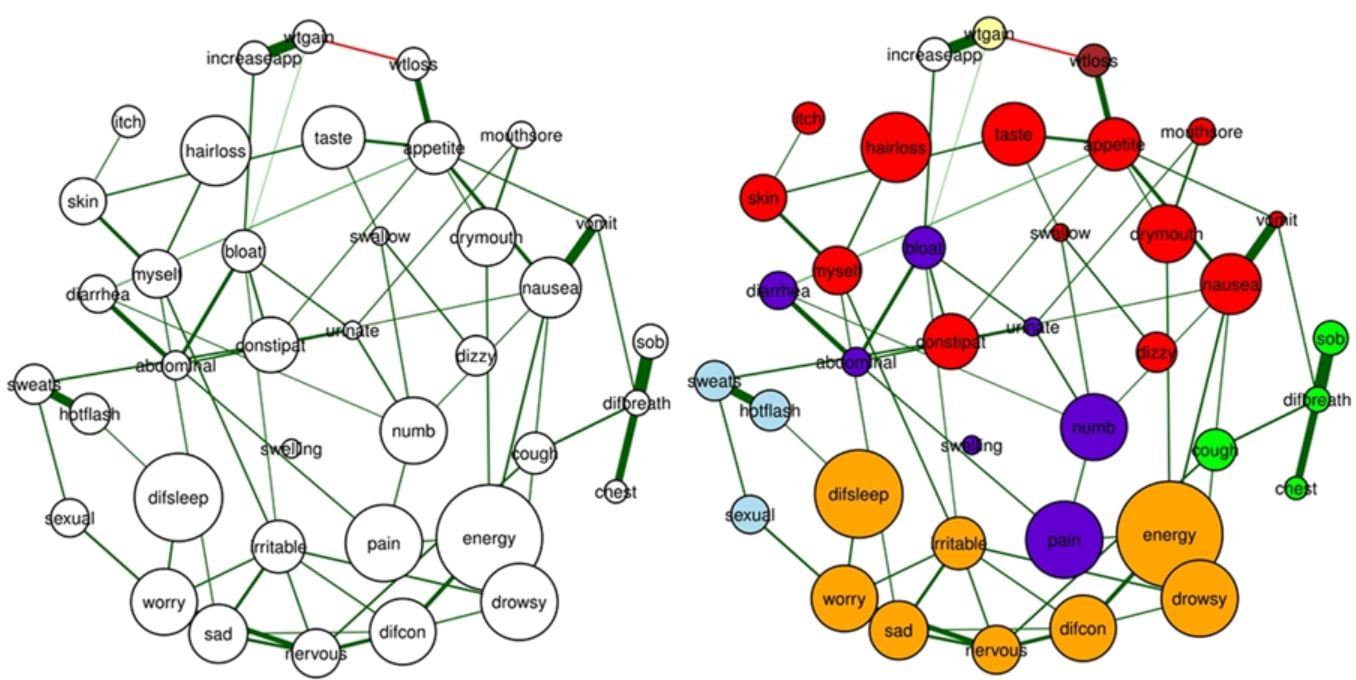
A team of researchers has developed a new Network Analysis technique that can detect and predict the development of cancer symptom clusters. They say that cancer patients who have to undergo chemotherapy may soon benefit from the AI-driven Network Analysis. It helps alleviate much of the distress that the symptoms cause.
Next-generation network analytics is driven by AI and machine learning. AI stands for artificial intelligence. Machine learning refers to AI’s ability to learn from data around it, i.e., learn from experience, on its own.
The researchers wrote about their study and findings in the prestigious journal Scientific Reports (citation below).
Researchers used Network Analysis
They detailed how they used Network Analysis (NA) to examine the structure and relationships between thirty-eight common symptoms. The symptoms had been reported by more than 1,300 cancer patients undergoing chemotherapy.
The most common symptoms that patients reported were fatigue, drowsiness, dry mouth, and nausea. Nervousness, hot flushes, and numbness were also common symptoms.
The researchers, from the University of Surrey and the University of California San Francisco, grouped the symptoms into three key networks:
- Distress
- Severity
- Occurrence
Thanks to the NA, the authors identified nausea as central. It impacted symptoms across the three different key networks.
Cancer Research UK says that nearly 360,000 Britons are diagnosed with cancer annually. Bowel, lung, prostate, and breast cancers represent more than half of all new cases.
Approximately twenty-eight percent of people diagnosed with cancer in England receive palliative or curative chemotherapy. For those people, it is part of their primary cancer treatment.
First time Network Analysis used for this purpose
Payam Barnaghi, a Professor of Machine Intelligence at the University of Surrey’s Centre for Vision, Speech and Signal Processing (CVSSP), said:
“This is the first use of Network Analysis as a method of examining the relationships between common symptoms suffered by a large group of cancer patients undergoing chemotherapy.”
“The detailed and intricate analysis this method provides could become crucial in planning the treatment of future patients – helping to better manage their symptoms across their healthcare journey.”
Christine Miaskowski, a Professor at the University of California San Francisco’s Department of Physiological Nursing, said:
“This fresh approach will allow us to develop and test novel and more targeted interventions to decrease symptom burden in cancer patients undergoing chemotherapy.”
Citation
“Network Analysis of the Multidimensional Symptom Experience of Oncology,” Nikolaos Papachristou, Payam Barnaghi, Bruce Cooper, Kord M. Kober, Roma Maguire, Steven M. Paul, Marilyn Hammer, Fay Wright, Jo Armes, Eileen P. Furlong, Lisa McCann, Yvette P. Conley, Elisabeth Patiraki, Stylianos Katsaragakis, Jon D. Levine, and Christine Miaskowski. Scientific Reports 9, Article number: 2258 (2019). DOI: https://doi.org/10.1038/s41598-018-36973-1.

